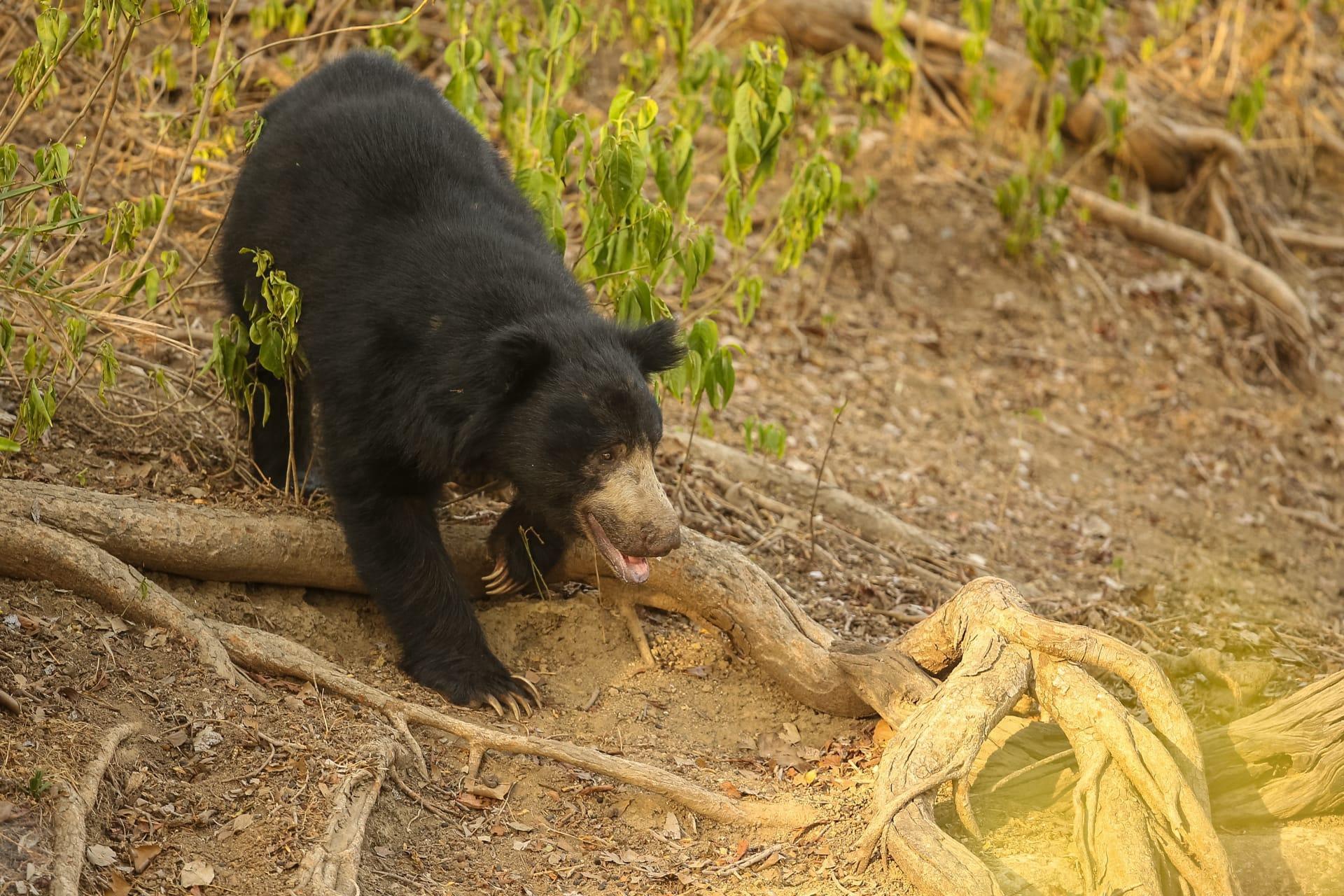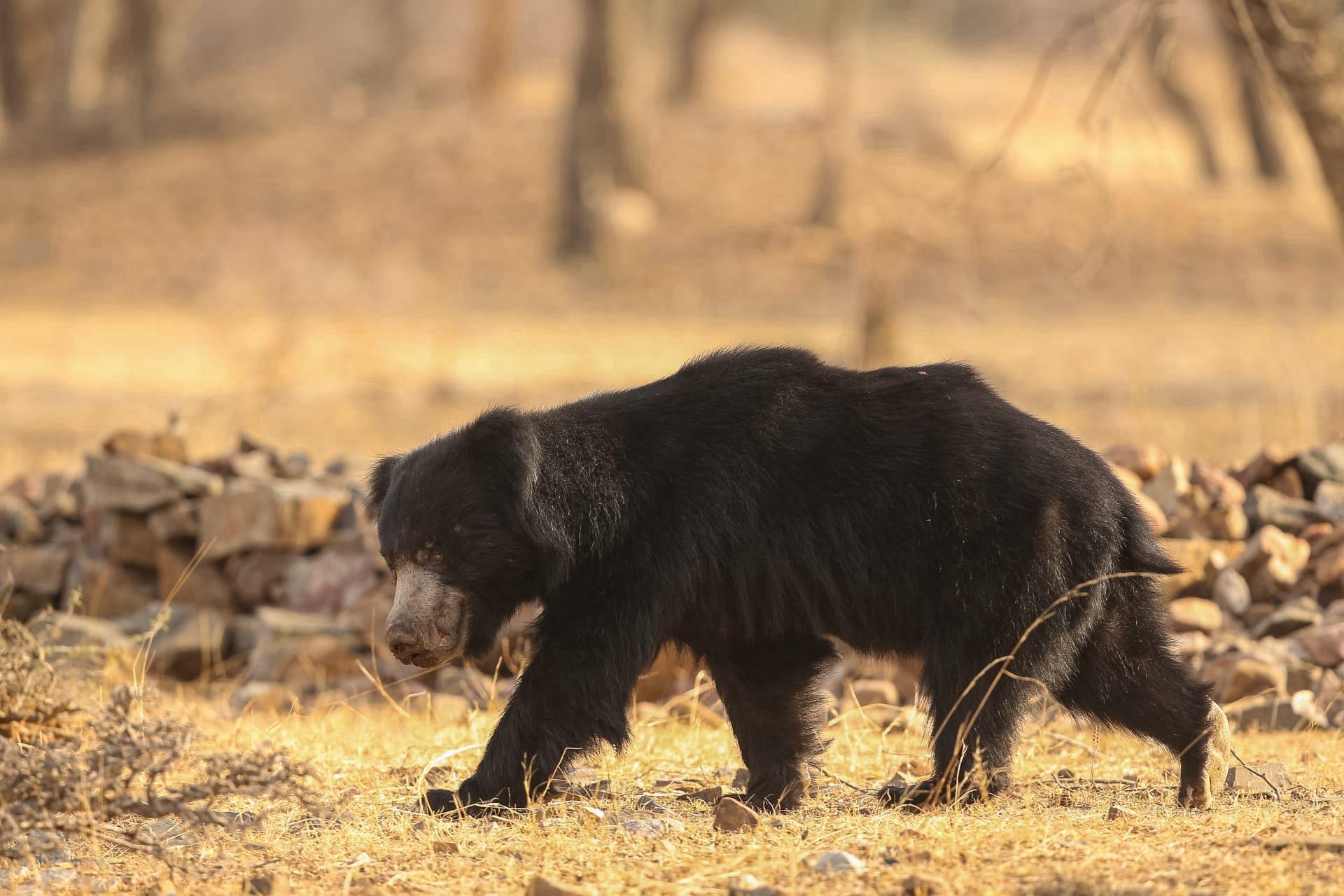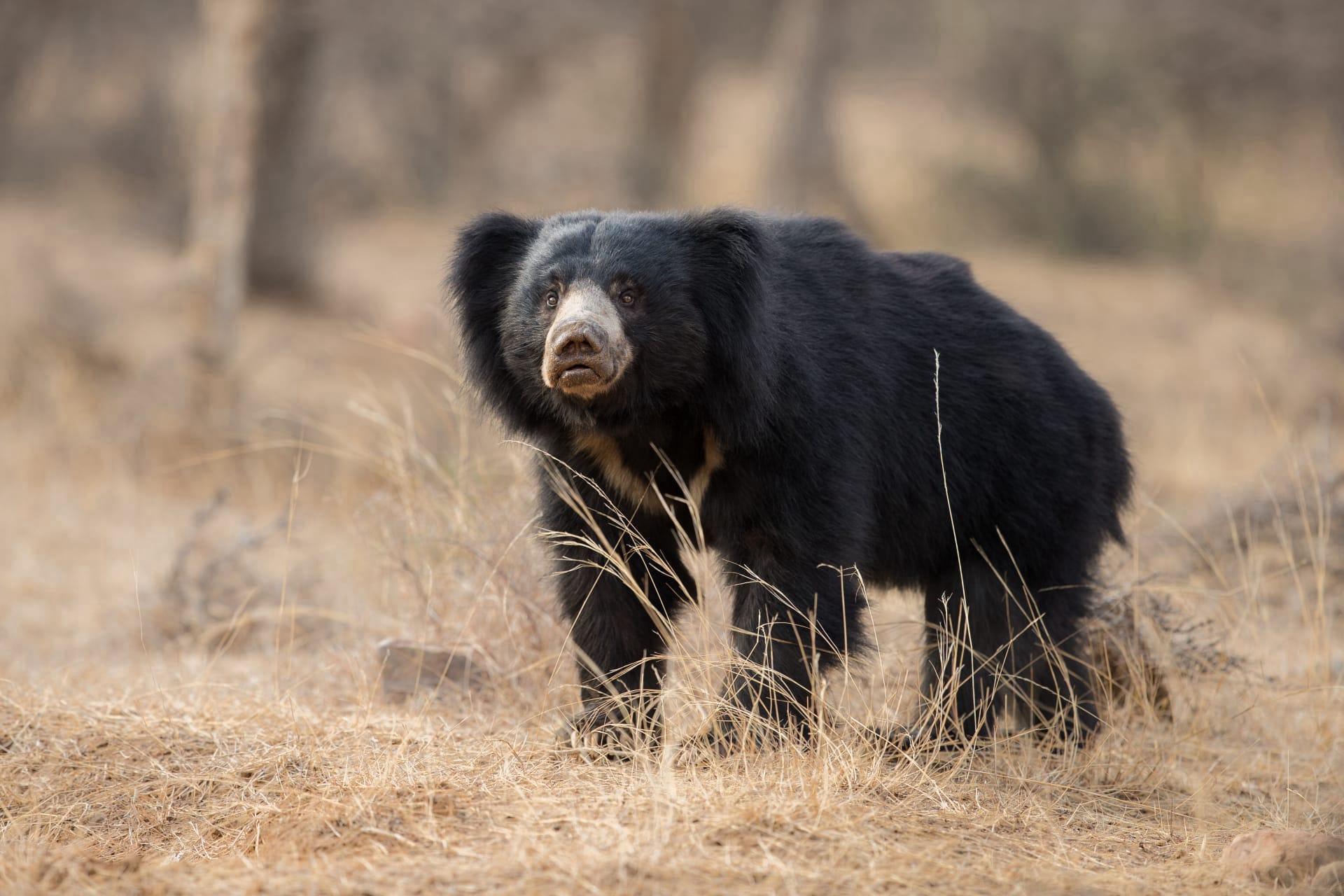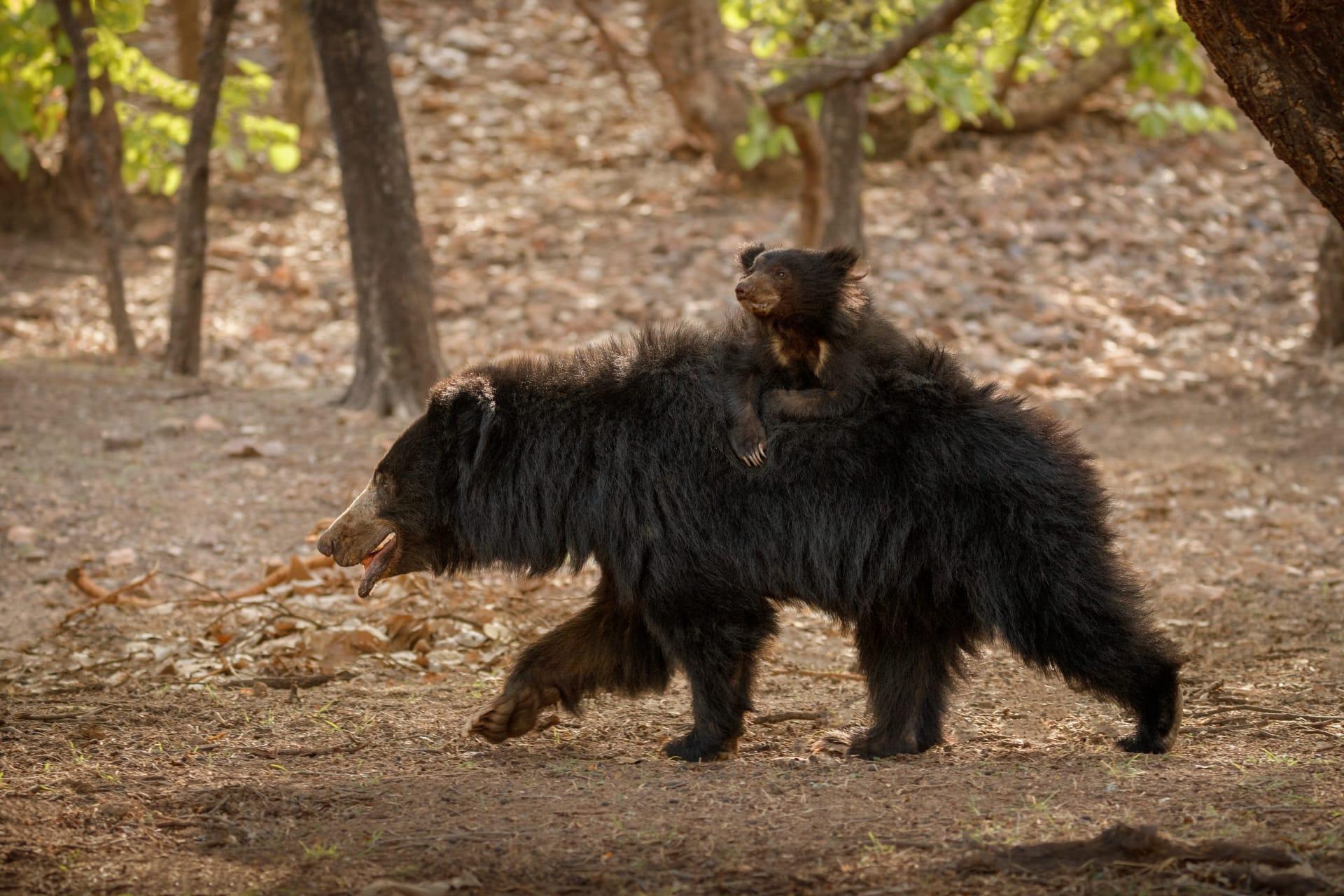Sloth Bear Trivia
- Home /
- Trivia Question /
- Animal /
- Sloth Bear Trivia
1
Question: What distinguishes the Sloth Bear's diet from other bear species?
Answer: Sloth Bears primarily eat insects, especially termites and ants, which is unusual for bears. They have a unique adaptation: long, curved claws to dig into nests and a specially adapted lower lip and palate used for sucking insects. They can consume fruit, but insects make up the bulk of their diet.
Question: How do Sloth Bears care for their young?
Answer: Female Sloth Bears exhibit a unique maternal behavior. Unlike other bear species, they carry their cubs on their backs until the cubs are around 9 months old. This behavior provides protection and mobility, allowing the young bears to learn and explore safely.

2
Question: Is it true that Sloth Bears are slow and lethargic like sloths?
Answer: Contrary to the name, Sloth Bears are neither slothful nor related to sloths. The name originates from their long, curved claws and their tendency to hang upside down on branches, reminiscent of a sloth. However, they are quite agile and can run faster than a human when necessary.
Question: Do Sloth Bears hibernate like other bear species?
Answer: No, Sloth Bears do not hibernate. Unlike bears in colder climates, Sloth Bears live in tropical environments in India and Sri Lanka, where the weather doesn't necessitate hibernation. Instead, they remain active year-round.

3
Question: What unique feature do Sloth Bears have that is not found in other bears?
Answer: Sloth Bears have a distinctive feature: a gap in their front teeth. This adaptation allows them to suck up insects efficiently, a crucial part of their diet. They close their nostrils when feeding to create a vacuum, which helps them suck up termites and ants from their nests.
Question: How do Sloth Bears impact their ecosystem?
Answer: Sloth Bears play a vital role in their ecosystems as a keystone species. By consuming termites, they control termite populations, which can otherwise become destructive. They also disperse seeds through their fecal matter, aiding in plant regeneration and biodiversity.

4
Question: Are Sloth Bears solitary animals?
Answer: Yes, Sloth Bears are primarily solitary, except during mating season or when a mother is with her cubs. They are nocturnal, spending the day in caves or under rocks and foraging at night, which also helps them avoid human contact.
Question: How do Sloth Bears communicate with each other?
Answer: Sloth Bears communicate through vocalizations, body language, and scent markings. They have a range of sounds, from grunts and snorts while foraging to loud roars when threatened. Scent markings on trees and the ground help them convey territorial boundaries and reproductive status.

5
Question: What threats do Sloth Bears face in the wild?
Answer: The primary threats to Sloth Bears are habitat loss due to deforestation and human encroachment, poaching for body parts, and conflict with humans. Conservation efforts focus on habitat protection, reducing human-bear conflicts, and enforcing anti-poaching laws.
Question: How long do Sloth Bears live in the wild and in captivity?
Answer: In the wild, Sloth Bears live around 20 years, but they can live up to 30 years in captivity with proper care. Their lifespan in the wild is affected by factors like availability of food, habitat quality, and human disturbances.